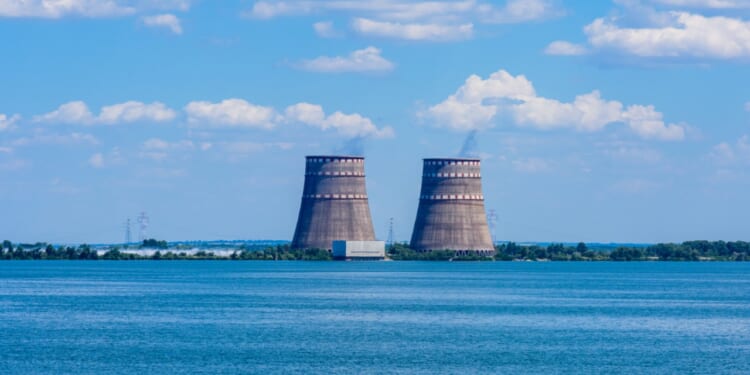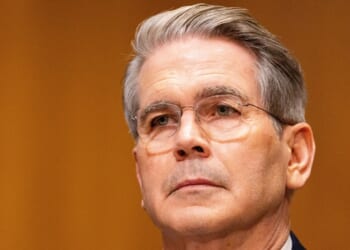Nuclear Energy Now tracks the latest nuclear energy developments across technology, diplomacy, industry trends, and geopolitics.
Slovakia Partners with the United States on New Nuclear Reactor
Slovakia and the United States are expected to sign an agreement for a new 1,000 megawatt (MW) nuclear reactor at Bohunice nuclear power plant. The new reactor will be state-owned and follows the government’s approval in May 2024 to pursue a new 1.2-gigawatt-electric (GWe) unit, with the United States, South Korea, and France initially considered as potential partners. While nuclear energy contributes to 80 percent of the country’s electricity, Slovakia is still a larger purchaser of Russian energy, particularly oil. That dependence has brought the country under pressure from President Donald Trump, who, during his speech to the United Nations General Assembly, said that Europe needs to stop buying Russian oil and gas. To that point, the European Union’s (EU) nineteenth sanctions package on Russia seeks to phase out all imports of Russian energy by 2027, a move that has raised concerns in Bratislava over potential price increases and supply disruptions. Although electricity prices in Europe have fallen from 2022 highs, they are still above pre-war levels. Slovakia, however, has been able to maintain some of the lowest electricity prices in mainland Europe. By further diversifying its energy mix and partnering with the United States, Slovakia is hedging against future disruptions while deepening transatlantic cooperation in the nuclear sector—an alignment that strengthens both its long-term energy security and its strategic ties within the EU and the North Atlantic Treaty Organization (NATO).
Turkey Considers a US-South Korea Partnership for Second Nuclear Plant
Russia has previously been Turkey’s go-to nuclear partner. It is building Turkey’s first nuclear power plant in Akkuyu, and until recently, it was expected to lead Turkey’s Sinop project. Now, Ankara plans to open the Sinop project to competition, signaling a strategic shift toward diversifying partners and reducing dependence on Moscow. The Turkish government is exploring a potential partnership with the United States and South Korea, following President Tayyip Erdogan’s visit to Washington, D.C., in September, during which Turkey and the United States signed a memorandum of understanding on civil nuclear cooperation. Both the United States and South Korea have presented possible reactor designs and financing models, and Turkey is also considering a three-way partnership. While a final decision isn’t expected until 2026, partnering with the United States and South Korea would deepen Ankara’s integration into Western energy and technology networks and potentially accelerate its ambitions to develop small modular reactors (SMRs).
Ukraine Nuclear Energy Sites Face Renewed Attacks
In recent years, the world has seen an increasing number of attacks on nuclear energy infrastructure. Ukraine’s nuclear facilities remain on the front lines of this growing threat. Earlier this month, power was restored at the decommissioned Chernobyl Nuclear Power Plant after drone strikes, which hit substations in Slavutych, cut electricity to the site. The International Atomic Energy Agency’s (IAEA) Director General, Rafael Mariano Grossi, said the outage “once again underlines risks to nuclear safety during the military conflict.” Although power was reconnected through alternate lines, the New Safe Confinement (NSC) structure—built to contain the remains of the 1986 reactor that melted down—remains vulnerable after suffering significant damage from drone strikes earlier this year that caused fires and punctured holes in its outer cladding.
The situation at the Zaporizhzhia Nuclear Power Plant, Europe’s largest, is also concerning. The facility has now operated for weeks without off-site power, relying on diesel generators to cool its shutdown reactors. The plant was recently hit by new artillery strikes, increasing the risk to nuclear safety. IAEA Director General Grossi warned that “the nuclear safety and security situation is clearly not improving,” describing the plant’s reliance on emergency systems as “extraordinarily challenging.” As of yesterday, the IAEA’s team has been working to help restore power to the plant, but this is the tenth occurrence where the plant has lost power, and it is likely not the last, given the precedent that has been set. Even within Russia, attacks on nuclear facilities have occurred, including a recent drone strike that hit a cooling tower at the Novovoronezh plant, though officials reported only minor damage.
Director Grossi has repeatedly said throughout the Russian invasion of Ukraine, and following the United States’ strikes on Iranian nuclear facilities, that “nuclear facilities must never be attacked.” The nuclear energy sector is one of the most unique in terms of its safeguards. It is a technology that could allow the world to combat climate change and meet the environmental goals that are imperative in the twenty-first century. However, nuclear energy’s momentum could be quickly ended by a catastrophic incident. We have seen this firsthand, following the accidents at Chernobyl and Fukushima. These attacks make clear the urgent need for stronger international mechanisms to protect civilian nuclear sites—both from direct military strikes and from the broader risks posed by the weaponization of energy infrastructure in conflict.
About the Author: Emily Day
Emily Day is an experienced researcher, writer, and editor with expertise in geopolitics, nuclear energy, and global security. She is an Associate Editor of Energy World and Techland at The National Interest and a Senior Research Associate at Longview Global Advisors, where she provides insights on global political and economic trends with a specialization in utilities, risk, sustainability, and technology. She was previously a Della Ratta Energy and Global Security Fellow at the Partnership for Global Security.
Image: Ihor Bondarenko/shutterstock


















